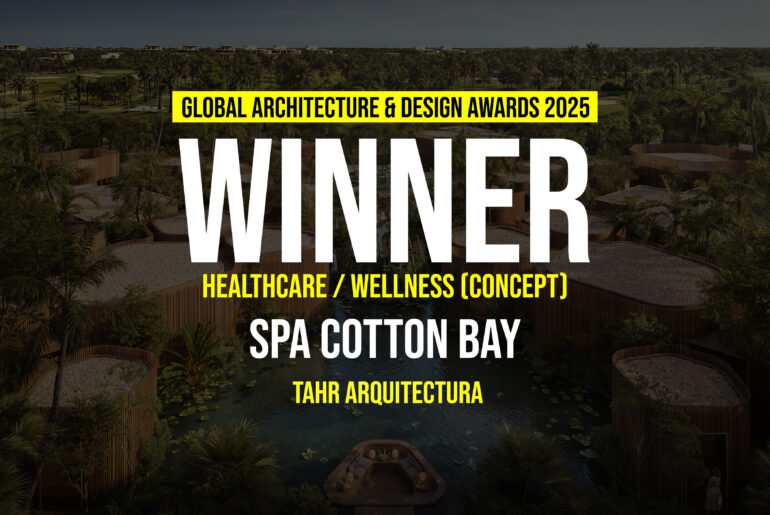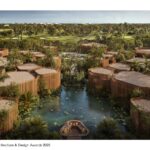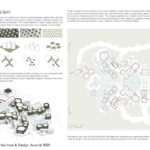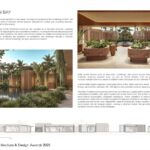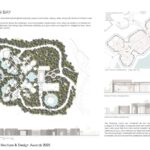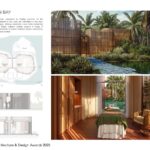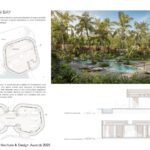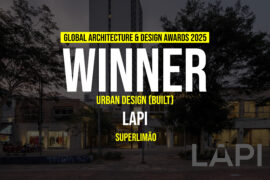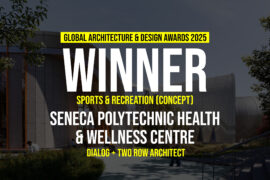Rooted in the cultural and ecological heritage of the Bahamas, the Ananas Spa redefines the spa typology through an architecture inspired by the organic geometry of the pineapple—an enduring symbol of the islands’ agrarian traditions. Located within the Cotton Bay Resort by The Ritz-Carlton in Eleuthera, the project forms an essential component of the master plan, designed to elevate holistic wellness while embracing sustainable practices.
Global Design & Architecture Design Awards 2025
First Award | Healthcare / Wellness (Concept)
Project Name: Spa – Cotton Bay
Category: Healthcare / Wellness (Concept)
Studio Name: TAHR Arquitectura
Design Team: Pablo Blasco, Jesus Fernandez, Sofia Bezaury y Hector de la Pena
Area: 1,420 m2
Year: 2025
Location: Eleuthera island, The Bahamas
Consultants: Studio Gronda, Blu Spas, Egis, SKS Studio
Photography Credits: –
Render Credits: Raum Visual, Javier Rabadan, Flow, Studio Gronda
Other Credits: Interior design by Studio Gronda. Landscape design by SKS Studio
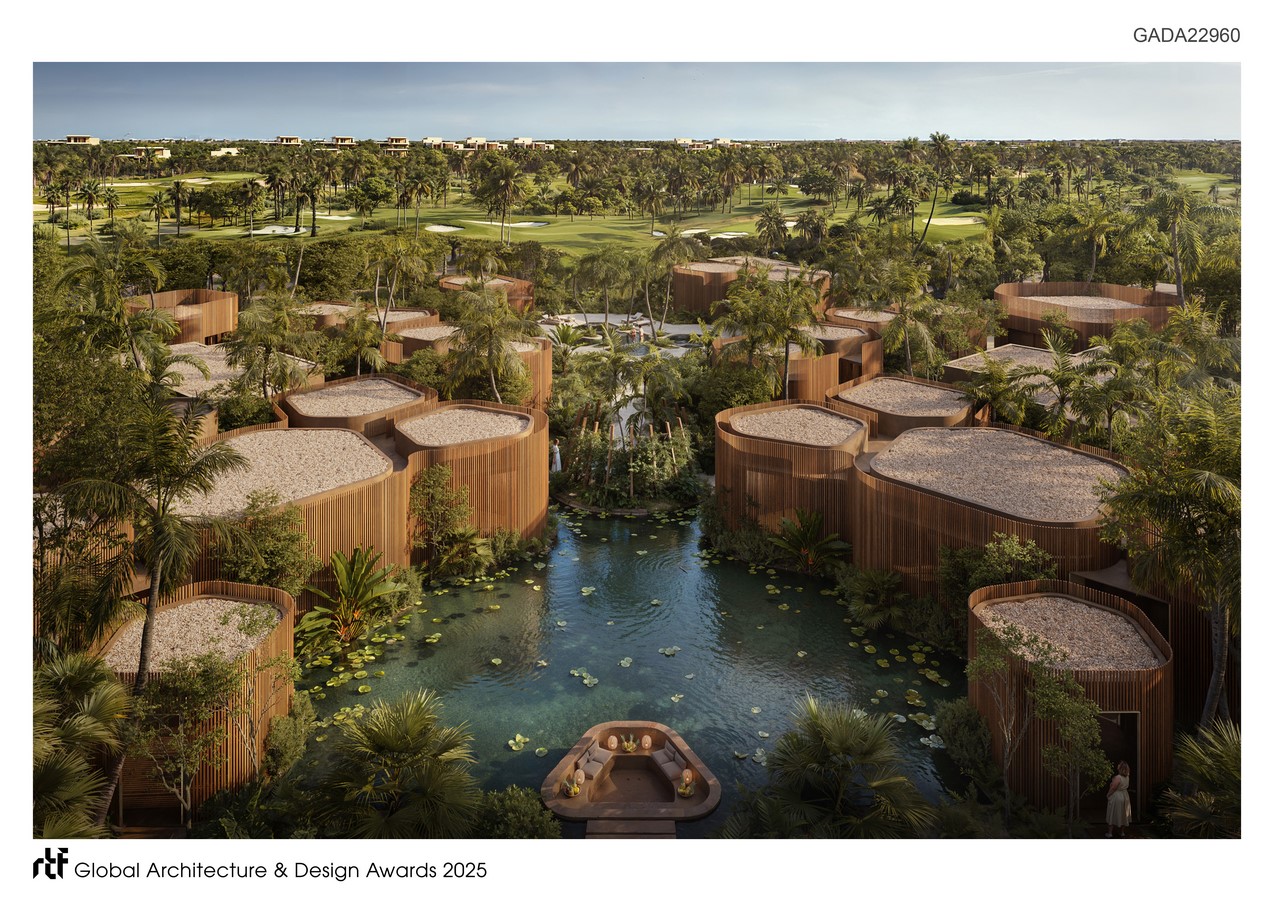
The concept draws from the pineapple’s hexagonal shell, generating a modular system of interlocking and independent pavilions that structure the spa. These hexagonal units, complemented by a rectilinear lobby and fitness center, are dispersed across a lush tropical garden and interconnected by bridges spanning reflective water bodies. This spatial choreography fosters fluid transitions between treatment areas, relaxation zones, and wellness facilities, ensuring both privacy and connectivity.
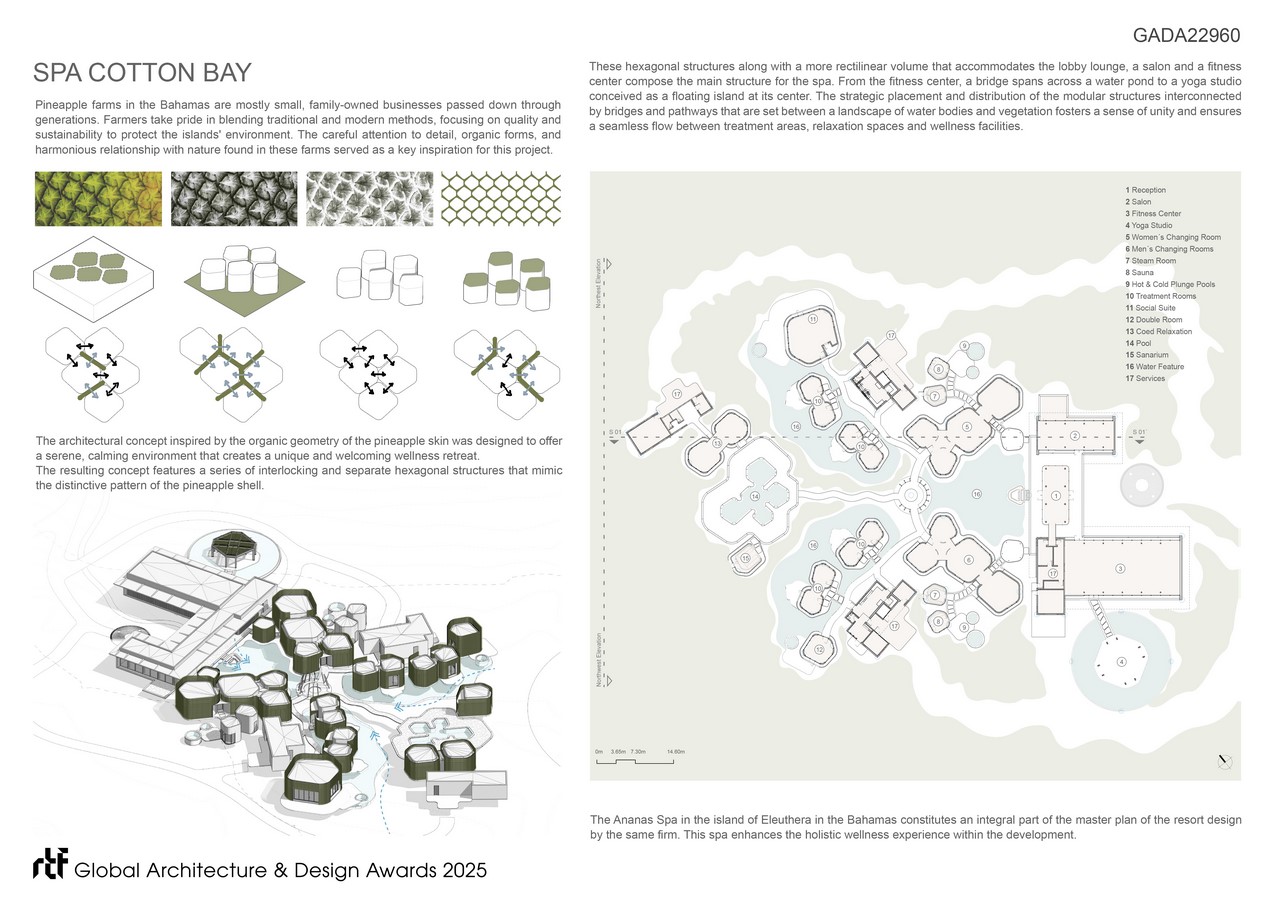
Materiality reinforces a dialogue between nature and built form. The lobby anchors the experience with stone totems that incorporate vegetation and integrated washbasins, crafted from Portuguese limestone, quartzite, and dark-toned woods. Large-format stone flooring with stratified patterns echoes geological textures, grounding the interiors and easing the transition to the landscape. Vertical bamboo laths clad the façades, providing durability, natural texture, and a sustainable finish.
The landscape design operates as both ecological infrastructure and sensorial framework. A network of water ponds functions as rainwater reservoirs, supplying irrigation for the golf course and meeting spa demands such as plunge and treatment pools. These aquatic systems not only conserve resources but also structure the site, weaving together architecture and nature into a serene and immersive environment.
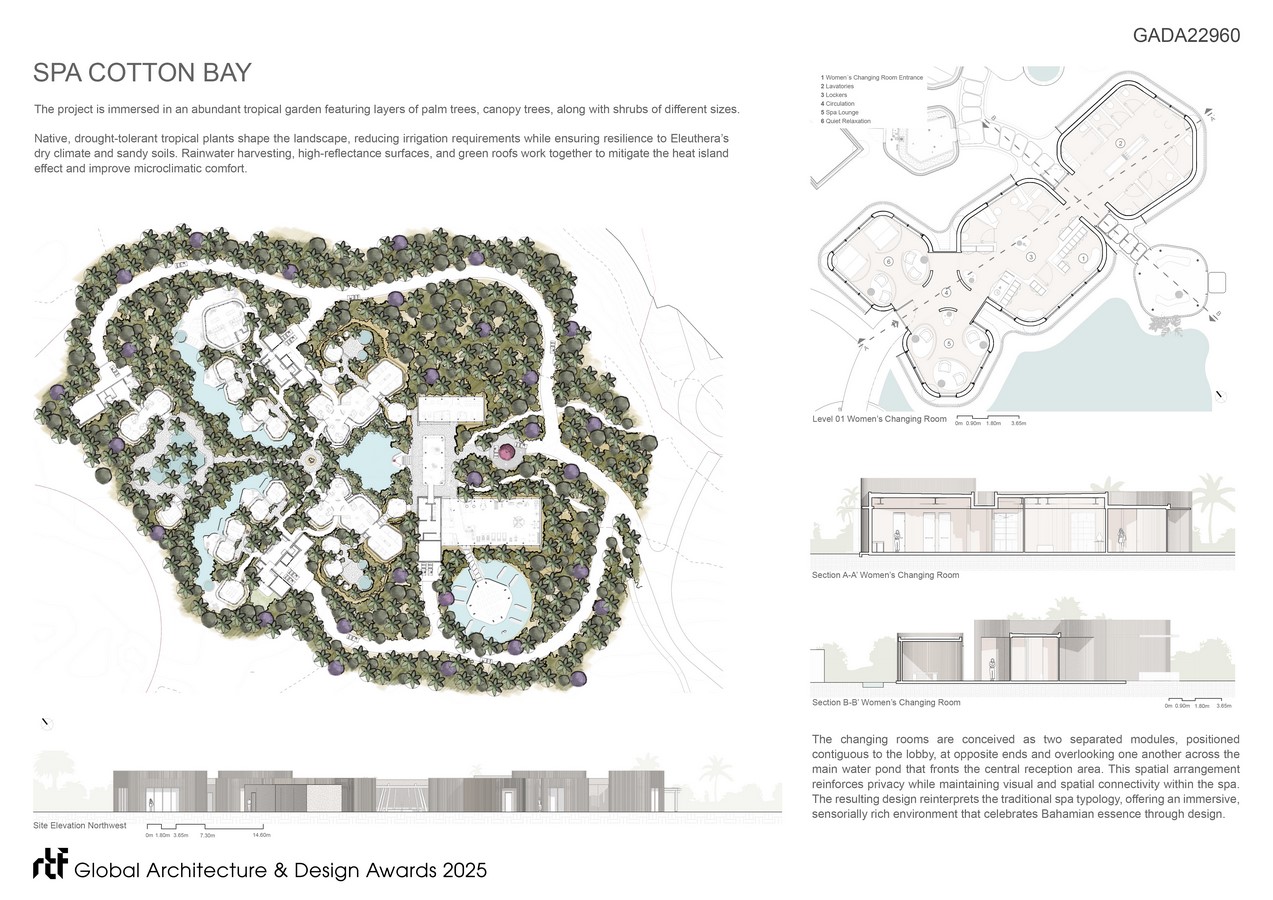
Sustainability strategies are integrated at multiple scales. Passive design principles—natural cross-ventilation, thermal mass walls, brise-soleil, and overhangs—minimize cooling demand while improving comfort. Rainwater harvesting, high-reflectance surfaces, green roofs, and native drought-tolerant vegetation reduce water use, mitigate the heat island effect, and enhance resilience to Eleuthera’s climate. A photovoltaic system supplies a significant share of electricity needs, complemented by LED lighting and automated controls for optimized energy performance.
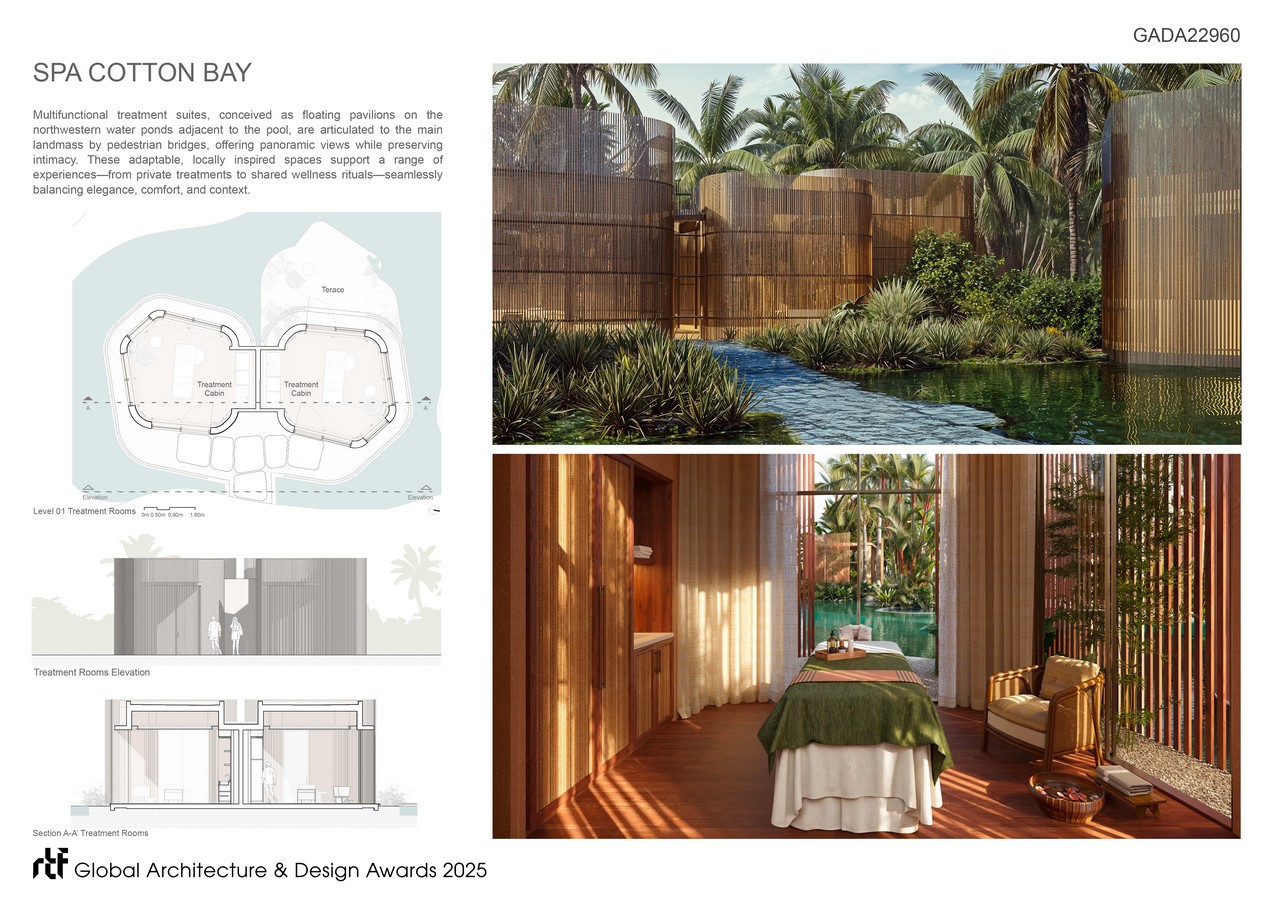
Programmatically, the spa offers diverse wellness experiences while maintaining contextual sensitivity. Floating pavilions house multifunctional treatment suites overlooking the ponds, balancing privacy with panoramic views. The yoga studio, conceived as a floating island at the center of a water body, reinforces the integration of architecture and landscape. The thermal wellness sanctuary, with saunas and steam rooms designed as hexagonal modules, opens toward surrounding vegetation, enveloping guests in a sensory dialogue of warmth, light, and calm.
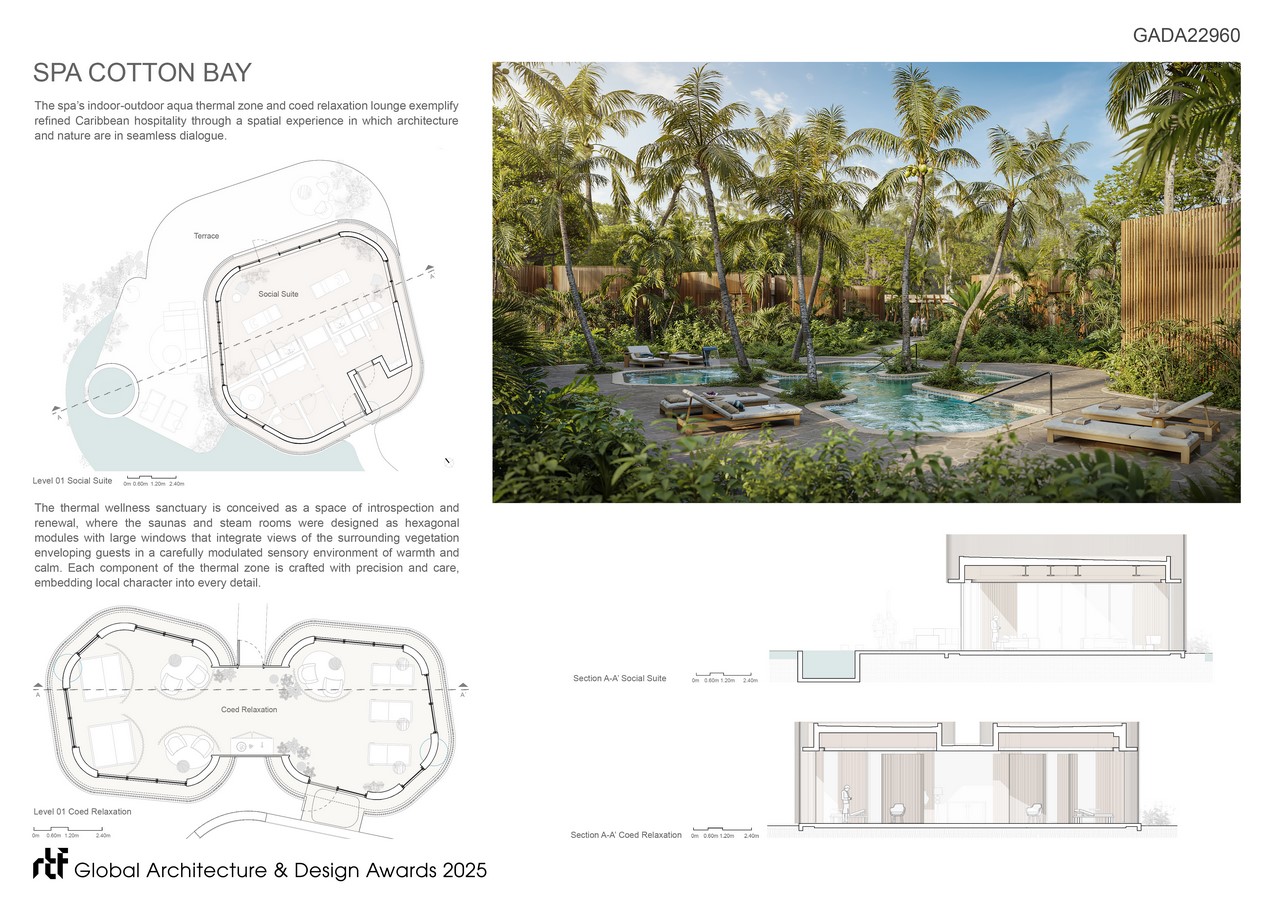
Through its geometry, materiality, and ecological integration, the Ananas Spa embodies the future of sustainable resort architecture. It reinterprets local traditions while pioneering modular, bioclimatic, and water-sensitive design strategies. More than a wellness destination, it stands as a prototype of environmentally responsive architecture that aligns hospitality with heritage, advancing a vision of resilience and innovation for the Caribbean context.

